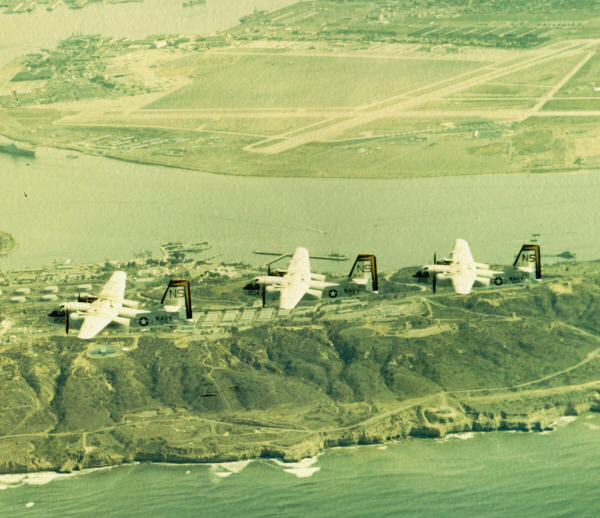
Some VS-29 S-2's over Point Loma
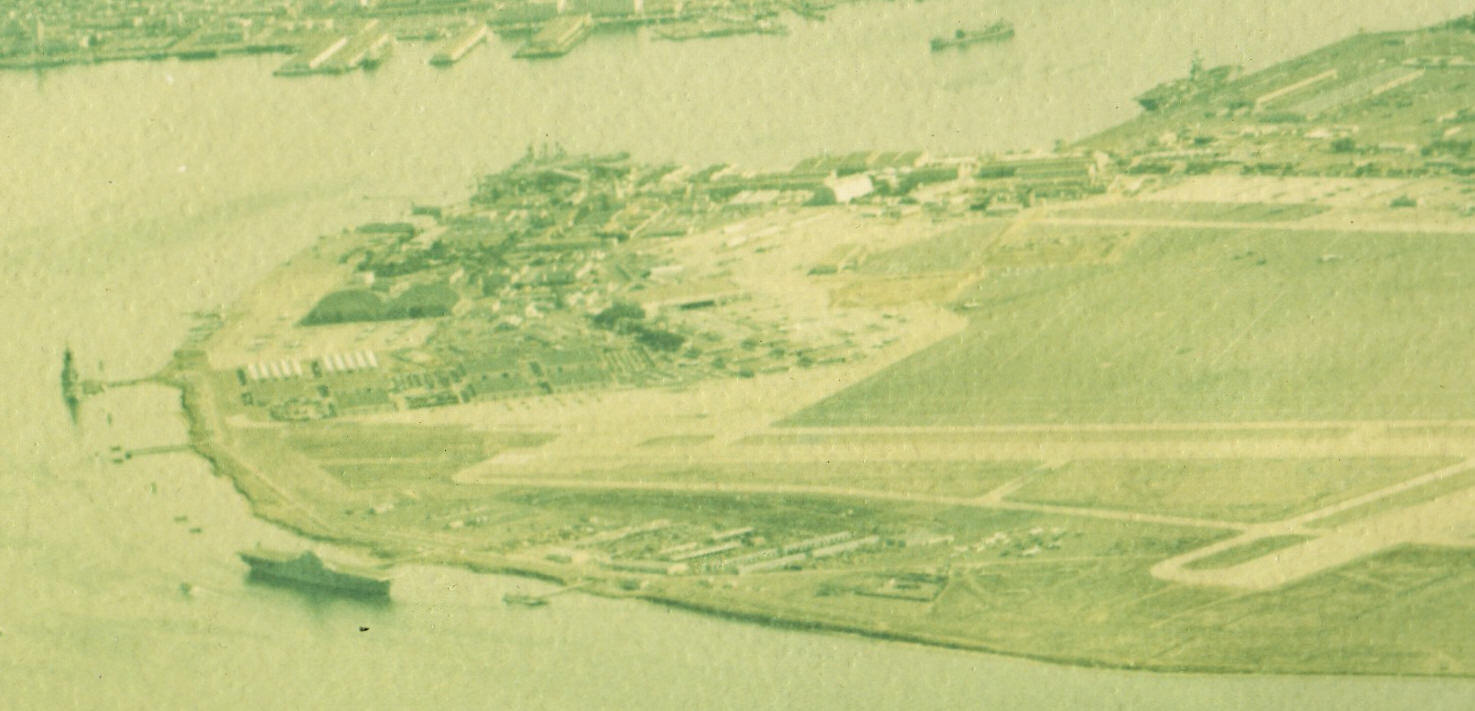
The carrier piers
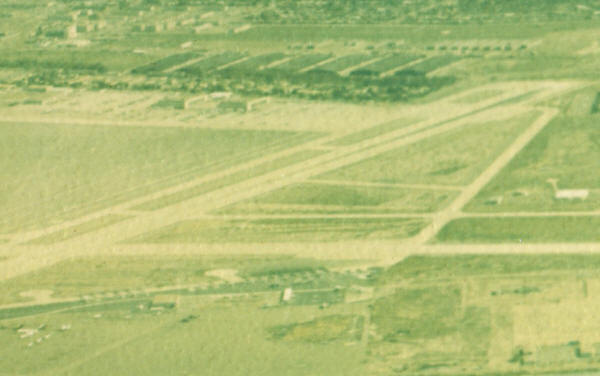
VS S-2 hanger area

Coronado
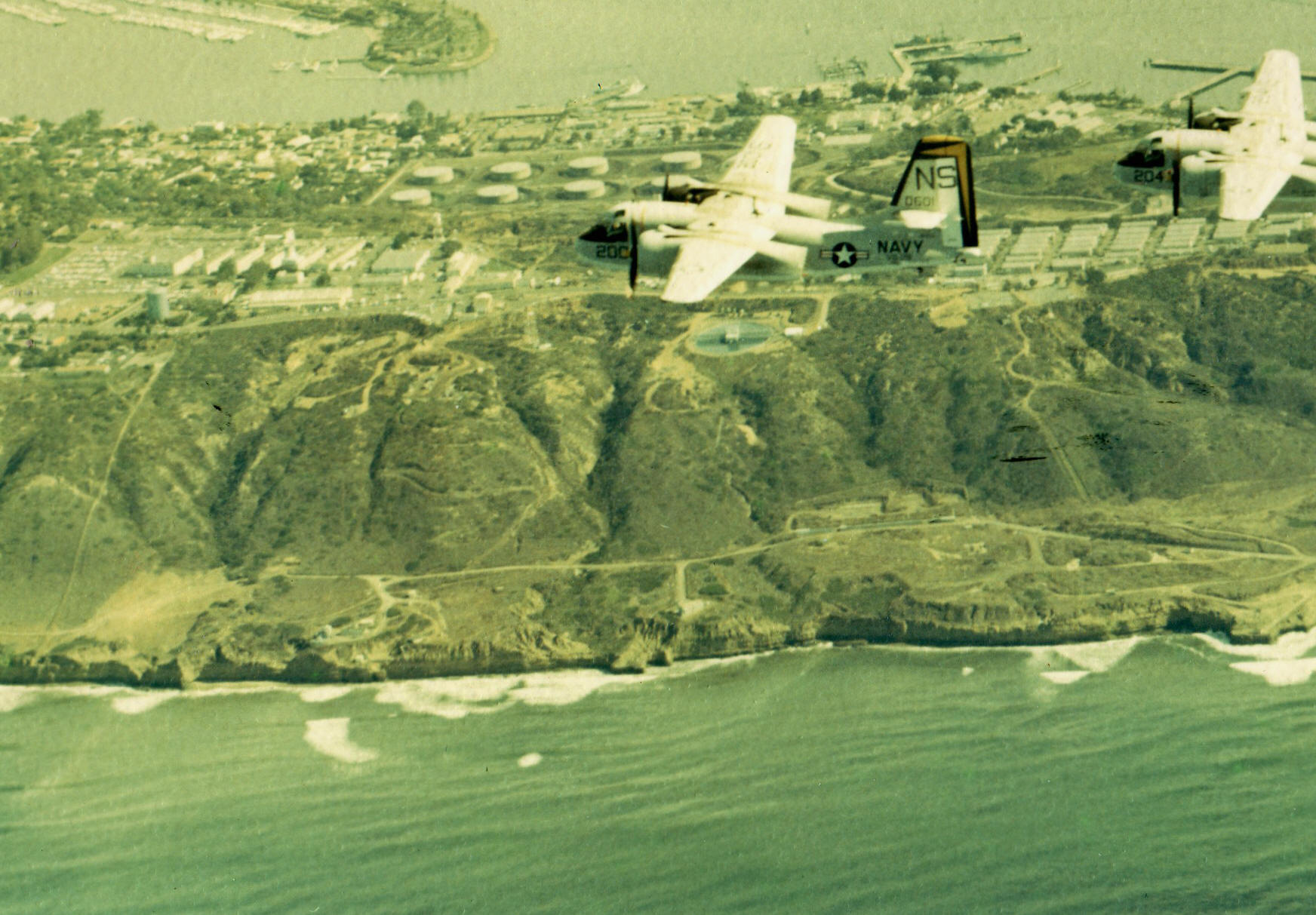
Point Loma
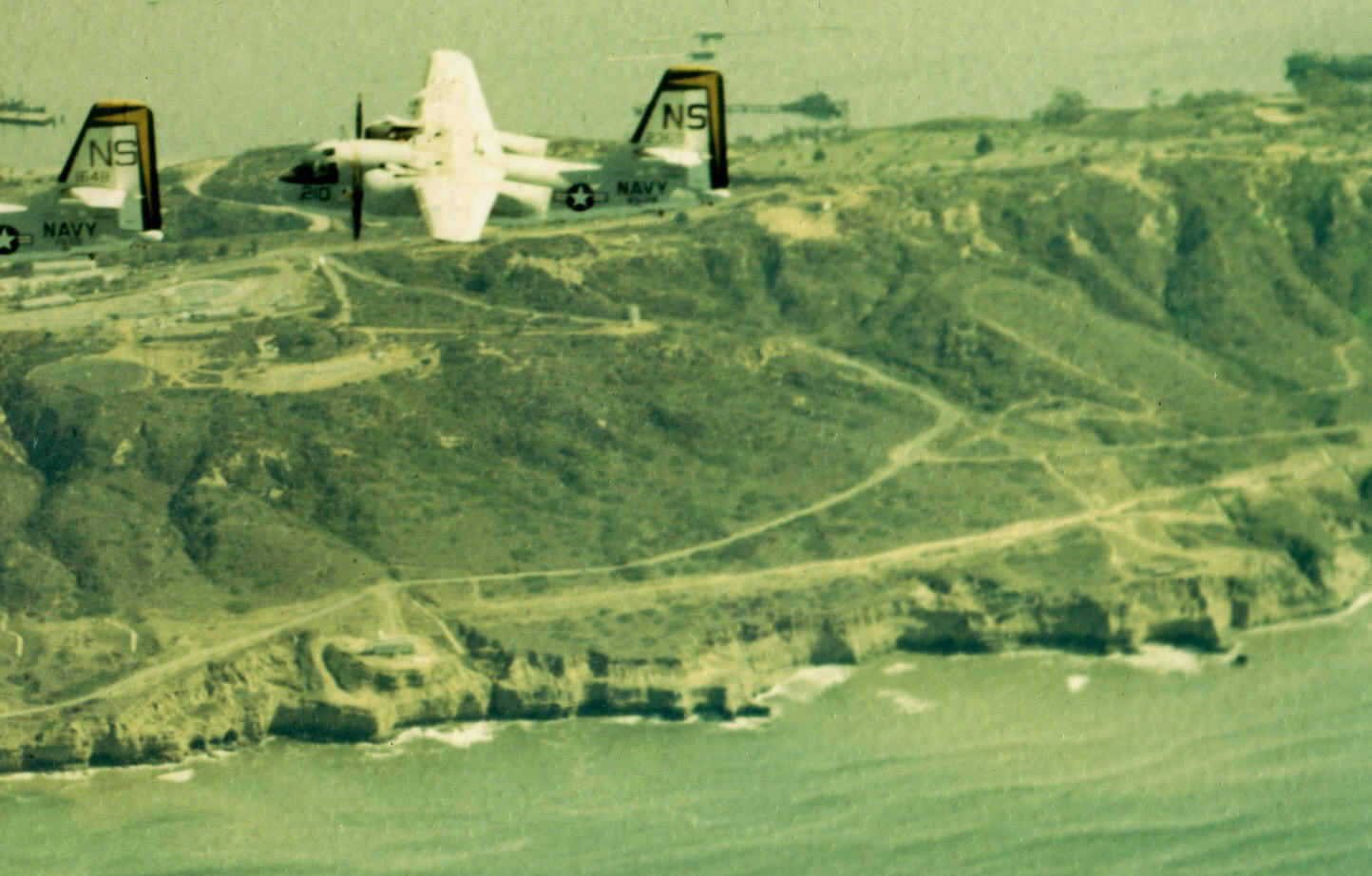
Point Loma
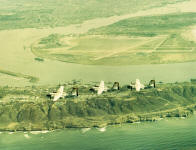
Original Picture,
Many thanks to E7 Marvin Johnson
for sharing this with us
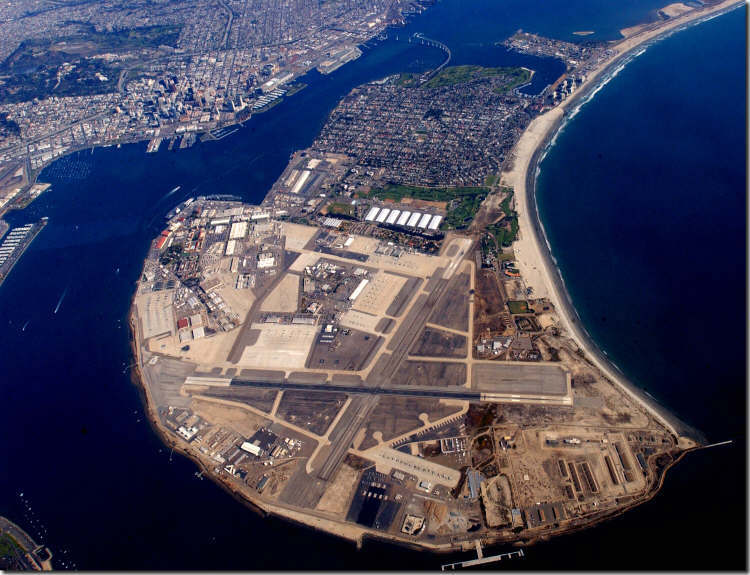
| Naval Air Station North Island |
|
Naval Air Station North
Island “Birthplace of Naval Aviation” North Island was commissioned a naval air station in 1917. The station, which was originally called the Naval Air Station, San Diego until 1955; was granted official recognition as the "Birthplace of Naval Aviation" by a resolution of the House Armed Services Committee on August 15, 1963.  The Navy's first aviator, Lieutenant
Ellyson, and many of his colleagues were trained at North
Island starting in 1911. At that time, North Island was an
uninhabited sand flat. It had been used in the late 19th
century for horseback riding and hunting by guests of J. D.
Spreckles' resort hotel, the now famous Hotel Del
Coronado. The Navy's first aviator, Lieutenant
Ellyson, and many of his colleagues were trained at North
Island starting in 1911. At that time, North Island was an
uninhabited sand flat. It had been used in the late 19th
century for horseback riding and hunting by guests of J. D.
Spreckles' resort hotel, the now famous Hotel Del
Coronado.North Island derived its name from the original geography. Up until the early 20th century, it was referred to as North Coronado Island, due to the fact that the Spanish Bight separated it from South Coronado Island until the early 1940s. In 1886, North and South Coronado Islands were purchased by a developer to become a residential resort. South Coronado became the City of Coronado, but North Coronado was never developed. Instead, Glen Curtiss opened a flying school and held a lease to the property until the beginning of World War I. In 1914, then unknown aircraft builder, Glenn Martin, took off and demonstrated his pusher aircraft over the island with a flight that included the first parachute jump in the San Diego area. The jump was made by a ninety-pound civilian woman named Tiny Broadwick. Other aviation milestones originating at North Island included the first seaplane flight in 1911, the first mid-air refueling and the first non-stop transcontinental flight, both in 1923. Before the Air Station was commissioned, Glenn Curtiss also trained the first group of Japanese aviators at his flying school on the Island. Among them was a Lieutenant C. Yamada would later become infamous as the head of Japan's Naval aviation forces in World War II. In 1917, Congress appropriated the land and two airfields were commissioned on its sandy flats. The Navy started with a tent-covered compound known as "Camp Trouble". The Navy shared the island with the Army Signal Corps' Rockwell Field until 1937, when the Army left and the Navy expanded its operations to cover the whole island. One of history's most famous aviation feats was the flight of Charles A. Lindbergh from New York to Paris in May 1927. His aircraft, The Spirit of St. Louis, was built in San Diego, and his flight originated at North Island on May 9, 1927, when he began the first leg of his transatlantic journey. Because the North and South Coronado Islands were separated by the Spanish Bight, the main entrance to the Air Station was via a causeway built along what is now McCain Blvd. When approaching Flag Circle from the front gate, the last tiled roof building on the left was the original gate guard building as evidenced by the Army Air Corps insignia, a pair of flight wings bisected by a single blade propeller, carved in the window shutters. Forefathers of today's "Blue Angels", the three-plane "Sea Hawks" of VF-6B, the "Felix the Cat" squadron, were thrilling audiences with flight demonstrations as early as 1928. They demonstrated the training skills of Navy fighter and bomber pilots and on many occasions, and even flew their aircraft in formation with the wings tethered together. The list of American military pilots trained at North Island reads like a Who's Who of aviation; however, America was not the only country interested in aviation early in the 20th century. Even the base's first commanding officer, Lieutenant Commander Earl W. Spencer Jr., USN, added a degree of celebrity to North Island. His wife was Wallis Warfield, a prominent socialite who remarried twice, and become better known as Wallis Warfield Spencer Simpson Windsor, the late Duchess of Windsor, for whom King Edward of England gave up his throne in 1936. In the early 1920s Naval Aviation took an important leap with the construction of the USS LANGLEY, the Navy’s first aircraft carrier. In 1924, LANGLEY, was homeported at NAS San Diego, which began a continuous use of North Island as the home port for Pacific Fleet carriers, and North Island took on the duties of providing service and training to the personnel of these new components to the Fleet. By 1935, North Island was home to all four of the Navy's carriers: the USS LANGLEY, USS LEXINGTON, USS SARATOGA and USS RANGER. During the Second World War, the Spanish Bight was filled with dredge from San Diego Bay. This newly recovered land connected the North and South Islands became a part of the base where most of the administrative and recreational buildings now stand. During the war, North Island was a major continental U.S. base supporting the operating forces in the Pacific. Those forces included over a dozen aircraft carriers, the Coast Guard, Army, Marines and Seabees. The City of Coronado became home to most of the aircraft factory workers and dependents of the mammoth base, which was operating around the clock. Major USO entertainment shows and bond drives were held weekly at the Ship's Service auditorium that was later replaced by the 1,600-seat Lowry Theater. Big band singers and movie stars were stationed here during the war years. Stars like the Marx Bros and Bob Hope appeared regularly at USO shows at the auditorium. By 1948, the base moved into the jet age, when Fighter Squadron 52 (VF-52), based at North Island was designated as the Navy’s first jet training squadron, flying the Lockheed TV-2 “Shooting Star” (Now called T-33). In 1950, the North Island-based aircraft carrier, USS VALLEY FORGE conducted the first nighttime jet landing. Many other significant events have occurred at North Island, including: 1967, the last Navy Seaplane departed NASNI; Aug. 1969, the Coronado Bay Bridge opened; Feb 1974, the first S-3 Viking Squadron stood up; Jan 1983, HSL-41 received the first SH-60B helicopter; Nov 1985, the first C-2 Greyhound aircraft arrive at NASNI; and November 2001, when the USS NIMITZ, a nuclear-powered aircraft carrier was homeported at NASNI. Today, the air station resembles a small, industrial city in its operations. It has its own police and fire departments. It has large industrial complexes where commands, such as the Naval Aviation Depot, employ thousands of civilians in aircraft maintenance. The base also boasts its own parks, beaches, housing, and recreation areas. North Island is headquarters for four major military flag officer staffs including: Commander Naval Air Forces, and supports 21 squadrons and more than 220 aircraft. Its piers are homeport to two major aircraft carriers, the USS NIMITZ (CVN 68), and the USS RONALD REAGAN (CVN 76). Additionally, the base is home to the Navy's Deep Submergence Unit. With all ships in port, the population of the station swells to more than 36,000 active duty, reserve, and civilian workers. |